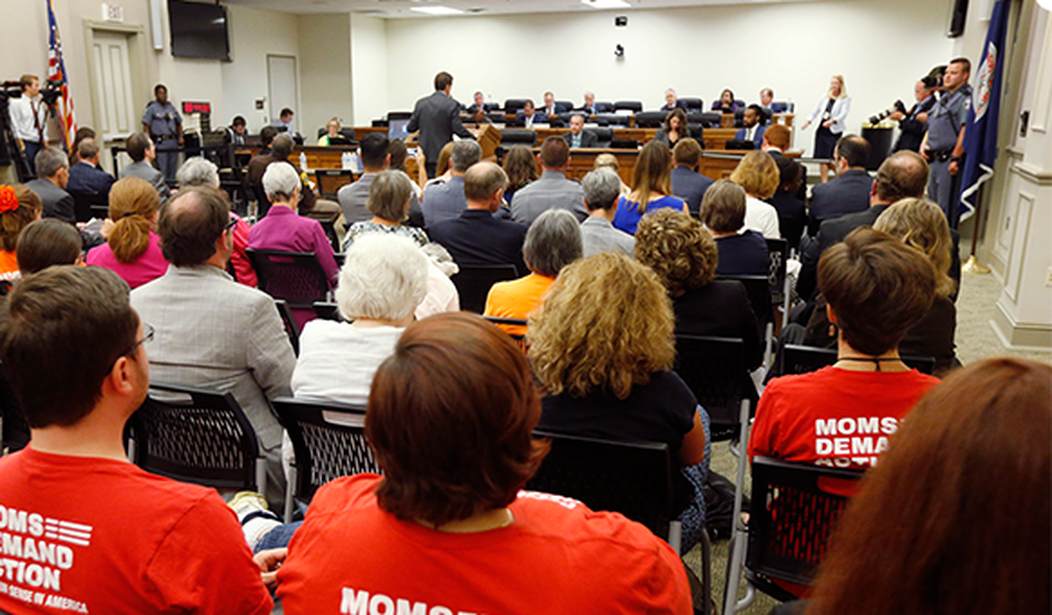According to the fundamental tenets of the gun control lobby, more guns equals more crime, and the only way to reduce violence is to reduce the number of firearms in the hands of we the people. It’s an argument that far too many Americans have bought hook, line, and sinker over the past few years, as violent crime rates rose sharply starting with the COVID shutdowns back in 2020; the same time Americans were rushing out to purchase a firearm of their own at a record pace.
Gun sales have subsided from their historic highs in 2020 and early 2021 (though we’ve still had 48-straight months of more than 1,000,000 sales according to the National Shooting Sports Foundation), but the tens of millions of firearms that were sold over the past few years are still in circulation. If you buy in to the anti-gunners’ theory, violent crime and homicides should still be trending upwards thanks to all those “guns on the street”, but instead we could be in the middle of the biggest one-year decline in our nation’s homicide rate.
Crime analyst Jeff Asher’s latest research shows a drop of almost 13% in reported murders in our biggest cities compared to the same point in time last year. According to Asher, there have only been three years since 1900 when the estimated homicide rate fell by 10% or more; 1902, 1909, and 1918. Crime reporting wasn’t nearly as comprehensive 120 years ago as it was today, so the estimated drop in 1902 and 1909 aren’t quite as certain as the reporting from 1918, but regardless of how accurate those early 20th century statistics might be it sure looks like we’re experiencing the biggest one-year decline in over 100 years.
A 10 percent decline in murder in 2023 would be amongst the largest over that span but possibly not the largest. We ultimately have no way to say for sure where exactly it would rank.
That said, a 10 percent decline in murder in 2023 would represent a decline of more than 2,000 fewer murder victims from one year to the next. Given how much smaller the US population was 100+ years ago, this would represent the largest one year decline in murders in US history.
Something that should be completely impossible under the “more guns, more crime” theory held as a fundamental truth by the anti-gunners. What’s more is that Asher’s data shows that some of the biggest declines in homicides are taking place in cities located in states with permitless or constitutional carry laws in place. Murders have fallen by 75% in Odessa, Texas; 59% in Savannah, Georgia; 53.6% in Lexington, Kentucky, 45% in Akron, Ohio, and 36% in Tulsa, Oklahoma… just to name a few.
Meanwhile, according to Asher’s statistics, several cities in states with restrictive gun control regimes are still experiencing big spikes in their homicide rates; a 175% increase in Providence, Rhode Island, 100% in New Haven, Connecticut; 30% in Boston, Massachusetts, and 25% in Washington, D.C., to name just a few.
To be fair, Asher’s data also shows declines in some gun-controlled cities like Buffalo, New York (a 46.7% drop) as well as increases in cities located in permitless carry states like Mesa, Arizona (a 53% increase), but if anything that points to the fact that violent crime is fundamentally a local issue, not something that can be adequately addressed through federal or even statewide gun restrictions. While murders have increased by more than 50% in Mesa, Arizona, in nearby Glendale they’ve declined 25%. Homicides in San Diego are down by 35%, but in San Jose they’ve increased 25%, which makes it hard to pin the blame or credit on any given state’s gun laws.
Asher’s long-term data also belies the assertions of anti-gunners that more guns equals more crime. Take a look at his estimated homicide rates dating back to 1900.

If more guns equal more crime, that graph would show a steady increase in murders decade after decade, not the waves of violent crime that crested in the mid-1930s and again in the early 1980s. Our most recent crime spike happened in 2020 and was the biggest one-year increase in the homicide rate recorded in more than 70 years, but now those numbers are plummeting once again, and 2023 could end up being the biggest one-year decline recorded since at least 1918.
Even with more than 400 million privately-owned firearms, the U.S. homicide rate is far lower today than it was throughout most of the 20th century; another inconvenient truth for the gun control crowd.
The simple facts are that more guns in the hands of law-abiding citizens don’t lead to more crime, violence in the United States appears to be trending downward after a brief spike beginning three years ago, and restrictive gun control laws are no guarantee of either public or personal safety; none of which are helpful to the anti-gunners narrative. If these homicide trends continue the rest of the year, expect the legacy media to give the amazing drop as little attention as they can, while their anti-gun allies will stick their heads in the sand and pretend it didn’t happen at all.









